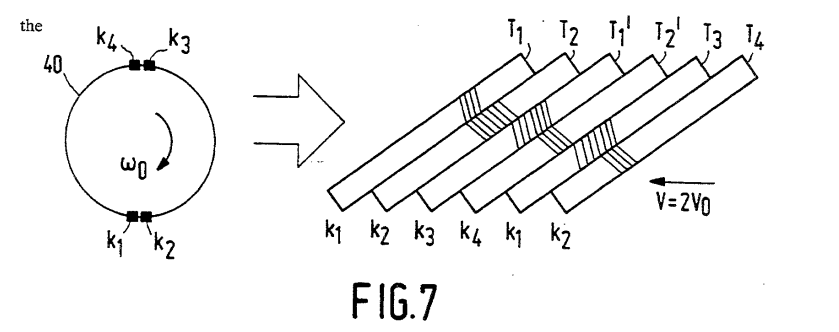by Dennis Crouch
The Federal Circuit's 1993 decision in In re Rijckaert, 9 F.3d 1531 (Fed. Cir. 1993), set an important boundary on the use of inherency in obviousness determinations. I recently reread the case and wanted to reintroduce the case that continues to be regularly cited in both patent prosecution and litigation.
Rijckaert involved a patent application for a magnetic recording apparatus that established a precise mathematical relationship between time expansion/compression and three variables: α (the wrapping angle of tape around the drum), n (the number of head pairs), and M (non-recording intervals). This relationship—expressed as α*n/(180*(M+1))—allowed for optimal track filling on the magnetic tape. The approach was designed to allow reduction of acoustic noise by positioning heads close together with rigid mechanical coupling, while maintaining proper signal timing and track alignment regardless of drum wobble or other mechanical imperfections. The PTO rejected the application as obvious two prior art references, despite neither reference teaching the claimed relationship or even discussing all three variables in combination.
The Board of Patent Appeals upheld the rejection by assuming that the relationship would be inherently satisfied if one assumed specific values for the variables. The Federal Circuit, however, reversed, emphasizing that the prior art failed to establish a prima facie case of obviousness because it neither disclosed nor suggested the claimed relationship.
To continue reading, become a Patently-O member. Already a member? Simply log in to access the full post.
